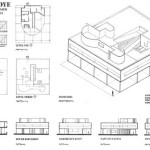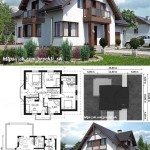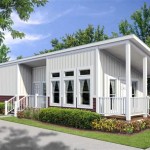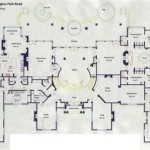Unveiling the Intriguing Architecture of Ancient Pompeii Houses
Delving into the ruins of ancient Pompeii unveils a fascinating glimpse into the architectural ingenuity of the Roman Empire. Among the most captivating aspects of this buried city are the remarkably preserved houses that offer insights into the domestic lives and societal norms of Pompeii's inhabitants.
Essential Components of a Pompeii House
Pompeii houses typically featured a standardized layout, with variations based on size and wealth. Key elements included:
- Vestibulum (Entrance): A small area leading from the street into the house, primarily used as a reception area.
- Atrium (Central Courtyard): The heart of the house, acting as a light and ventilation source, with a central opening called a compluvium.
- Impluvium (Basin): A shallow pool beneath the compluvium, collecting rainwater for domestic use.
- Tablinum (Reception Room): Located opposite the atrium, used for formal receptions and business dealings.
- Culinary (Kitchen): A small, windowless room with a hearth and stone benches for food preparation.
- Oeci (Living Rooms): Large, well-lit rooms used for dining, entertaining, and social gatherings.
- Cubicula (Bedrooms): Often small and windowless, used exclusively for sleeping.
Social Class and House Design
Wealth and social status played a significant role in the size and embellishments of Pompeii houses. Wealthier families had larger houses with multiple atria, luxurious interior decorations, and elaborate gardens. The design of houses also reflected social norms, such as the segregation of living quarters for men and women.
Architectural Innovations
Pompeii houses incorporated innovative architectural techniques that showcased the Romans' engineering prowess:
- Roman Concrete: A revolutionary building material that allowed for the construction of vaulted ceilings, arches, and domes.
- Hypocaust System: An underfloor heating system using hot air channeled through hollow walls and floors.
- Aqueduct System: A network of aqueducts provided a reliable supply of clean water to houses, fountains, and baths.
Peristyle Houses and Gardens
Larger and more affluent Pompeii houses often featured a peristyle, a colonnaded courtyard surrounded by a garden. These gardens provided a serene escape from the hustle and bustle of urban life and served as a gathering place for social events and relaxation.
Pompeii houses offer a valuable glimpse into the everyday lives of the ancient Romans, providing insights into their domestic customs, social hierarchy, and architectural ingenuity. Through the meticulous preservation of these ruins, we gain a tangible connection to this vibrant and tragic city, forever frozen in time.

Pompeii House Of The Vettii Article Khan Academy

Plan Of A Pompeian House Roman Courtyard Plans Atrium

Typical Villa Layout From Pompeii Roman House

Pompeii S Richest Residence The House Of Faun How To Plan

House Of The Faun Home

3 5 4 Pompeii House Of The Vettii Humanities Libretexts

60204 Plan

House Of The Tragic Poet Ground Floor Plan Scientific Diagram

Roman Domestic Architecture Domus Article Khan Academy

View Article Roman Atrium Style Housing








